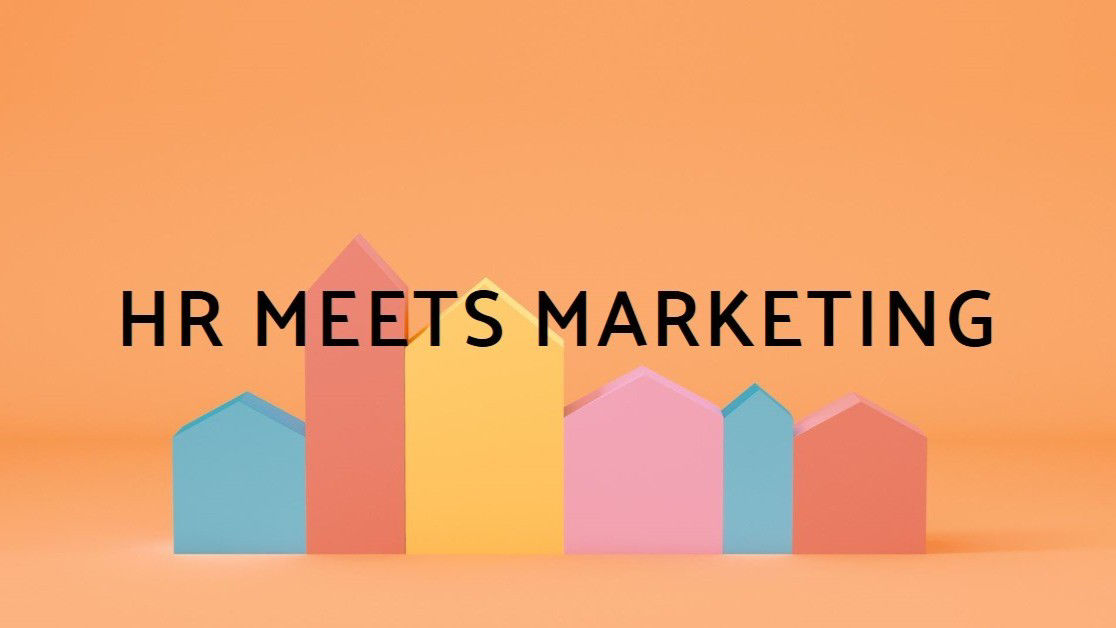5 mins read//
A Strategic Intersection
In an age defined by digital transparency, brand authenticity, and people-centric business models, a quiet revolution is underway one where Human Resources and Marketing are joining forces in unprecedented ways. No longer confined to their traditional boundaries, these two departments are discovering a shared purpose: to tell the organization’s most important story its people.
When HR and Marketing work collaboratively, they unlock a new level of organizational influence. Together, they shape culture, communicate purpose, and create experiences that attract, engage, and retain top talent all while reinforcing the company’s brand both internally and externally.
This is not just a trend; it’s a transformational shift in how successful organizations operate in the 21st century.
Why This Integration Matters
The functions of HR and Marketing are evolving in parallel and toward convergence. HR has moved from a compliance-focused back office function to a strategic partner that drives workforce planning, engagement, inclusion, and leadership development. Marketing, meanwhile, has matured beyond brand awareness and lead generation into storytelling, experience design, and community building.
The overlap is natural. Both departments are stewards of communication, culture, and credibility. And both have the potential to amplify the other’s impact when they work together.
Organizations that align their people strategy with their brand strategy are better equipped to navigate complexity, foster innovation, and stay competitive. Why? Because talent and reputation are inextricably linked. A company’s ability to attract great talent is directly influenced by its brand. And its brand is shaped, in turn, by the experiences of its people.
1. Aligning Brand Identity with Workplace Culture
One of the most pressing challenges in employer branding is the misalignment between a company’s external promises and internal reality. Candidates are no longer swayed by slogans or flashy videos alone. They investigate Glassdoor reviews, employee LinkedIn posts, and workplace reputation before applying. If there’s a gap between brand and culture, they will find it and walk away.
HR and Marketing must collaborate to ensure that what’s being marketed to the world reflects the lived experiences of employees. This means auditing internal culture, understanding what truly differentiates your workplace, and communicating those truths clearly, consistently, and credibly.
Real-World Example:
A fintech company promoting itself as “customer-obsessed” must ensure its internal policies empower employees to act on behalf of customers, encourage decision-making autonomy, and reward service innovation.
2. Elevating Employer Branding Beyond a Buzzword
Employer branding is no longer a one-time campaign. It’s a continuous, evolving story shaped by everyday moments employee recognition, career growth, DEI efforts, and team dynamics. Marketing brings storytelling prowess and digital expertise. HR brings access to authentic employee voices, career development journeys, and workplace impact.
When these elements are combined, employer branding becomes an ongoing narrative of what it's like to work at your company told by those living it.
Pro Tip:
Leverage storytelling techniques to spotlight team projects, employee achievements, and cultural rituals. Don’t just talk about values show them in action.
3. Recruitment with Precision and Purpose
Recruitment marketing is one of the most immediate wins from HR-Marketing alignment. With the help of marketing’s data tools, advertising platforms, and audience insights, HR can build personalized, targeted hiring campaigns that attract the right candidates faster.
It also enables a shift from transactional hiring (filling roles) to strategic recruitment (building talent pipelines).
Best Practice:
Create detailed candidate personas just like marketing builds buyer personas. Understand motivations, career goals, digital habits, and communication preferences. Use this to design campaigns that speak directly to high-fit candidates.
4. Reimagining Internal Communication and Engagement
Internal communications are often undervalued and underutilized. Yet, how a company communicates internally shapes employee trust, motivation, and alignment. By applying marketing strategies such as segmentation, visual storytelling, and tone-of-voice consistency, HR can transform internal content into high-impact communication.
This includes everything from policy changes to culture-building messages, leadership updates, and training initiatives.
Framework:
- Segment: Tailor messages by audience e.g., frontline staff vs. leadership.
- Style: Use a tone that reflects your external brand and internal values.
- Structure: Deliver content visually, clearly, and concisely.
- Measure: Track open rates, feedback, and engagement levels.
5. Activating Employee Advocacy
People trust people more than brands. That’s why employee advocacy is one of the most powerful forms of marketing today. When employees share their authentic experiences, they generate social proof that attracts talent, builds trust, and enhances brand equity.
But advocacy doesn't happen by accident. HR must foster a culture that employees are proud to represent, while Marketing provides the tools, channels, and content support to help employees become confident brand ambassadors.
Insight:
Launch an internal brand ambassador program. Train employees on personal branding, social media etiquette, and storytelling. Recognize and reward those who champion the brand.
6. Making Onboarding a Signature Experience
The first 90 days of employment shape long-term employee perceptions and performance. Yet, many onboarding programs focus more on checklists than connection. This is a missed opportunity.
By integrating Marketing's experience design expertise, onboarding becomes a branded journey one that immerses new hires in culture, mission, and values from day one.
Design Ideas:
- Welcome videos from leadership and team members
- Interactive onboarding portals with visual guides and timelines
- Branded onboarding kits with personalized messages and company swag
- Story-driven introductions to teams, projects, and cultural rituals
7. Creating Shared Metrics and KPIs
For HR and Marketing to work effectively together, they need shared goals and metrics. This means defining success beyond departmental silos and tracking outcomes that reflect both people and brand performance.
Examples of shared KPIs include:
- Talent Metrics: Application-to-hire ratio, quality of hire, time to fill
- Engagement Metrics: eNPS (Employee Net Promoter Score), survey participation, internal campaign reach
- Brand Metrics: Brand sentiment, Glassdoor scores, referral rates
- Experience Metrics: Onboarding satisfaction, training completion, advocacy participation
Aligning around these shared outcomes drives accountability, clarity, and continuous improvement.
Conclusion: The People-Brand Equation
Culture and brand are no longer separate ideas. They are two sides of the same coin—and HR and Marketing are the ones who mint it.
In a world where trust drives loyalty, where employees are customers and customers are future employees, businesses that unify their people and brand strategies have the edge. They become more resilient, more human, and more aligned from the inside out.
This isn’t just about better recruitment or improved engagement. It’s about unlocking the full potential of your organization through shared purpose and powerful storytelling.
Final Thought:
If your people strategy isn’t treated like a brand strategy, you’re missing a critical lever for growth. Now is the time to bring HR and Marketing to the same table to shape the future of work, together.











